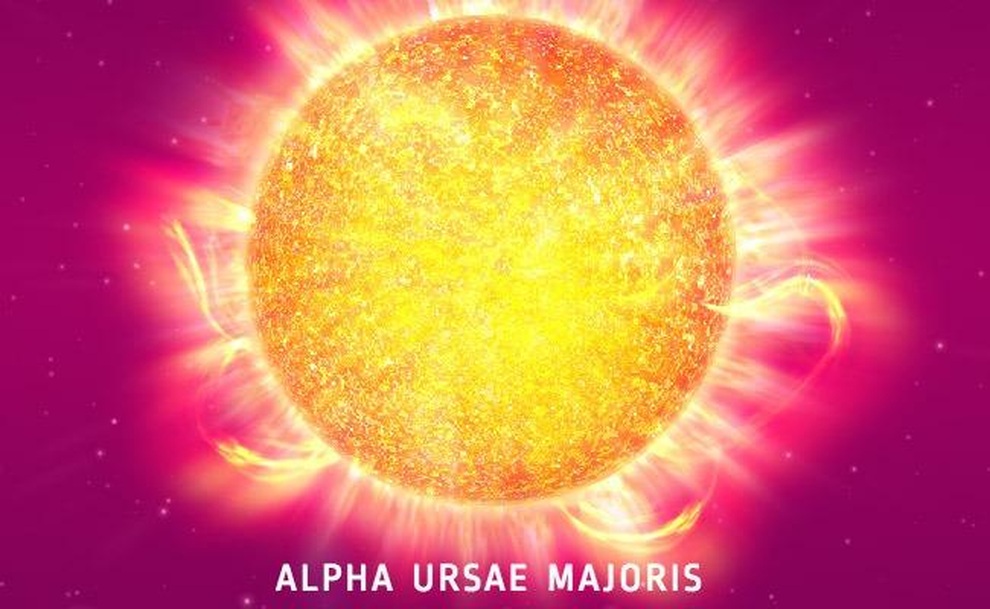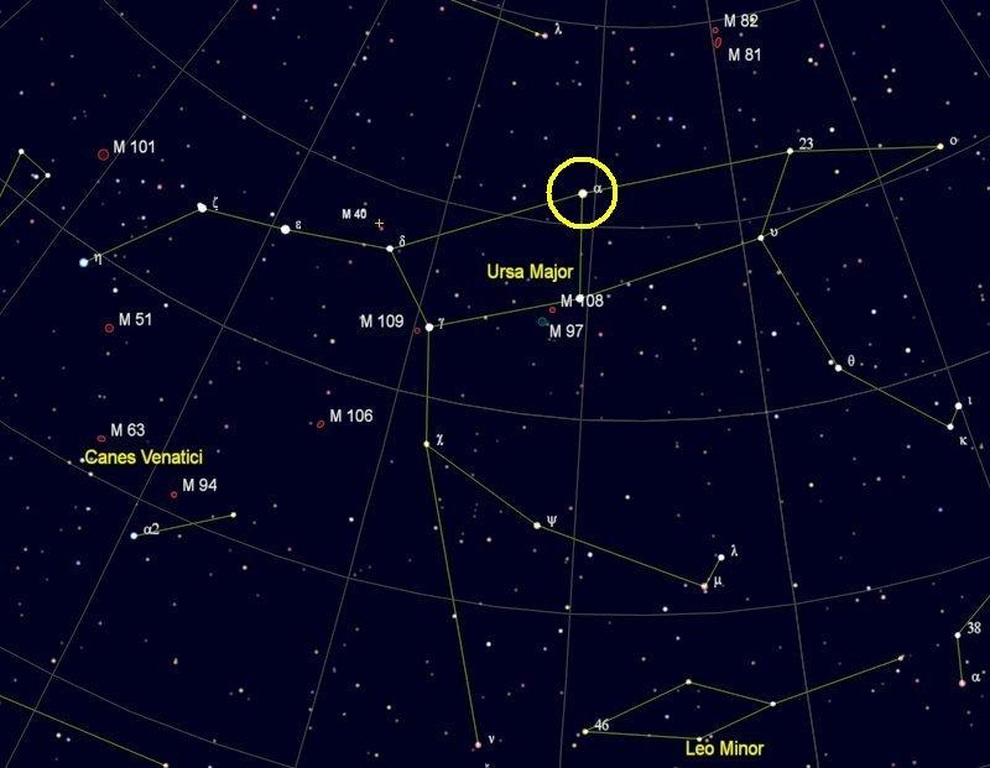
From Northern "indicator" to historical witness
Alpha Ursae Majoris (Dubhe), part of the Big Dipper constellation, has been noticed and named by many ancient civilizations for so long that it is difficult to determine when humans first discovered it.
In Greek mythology, this star is associated with the story of Zeus turning Callisto into a bear. In China, Alpha Ursae Majoris, or Thien Xu, is an important star in the Big Dipper constellation, a symbol of guidance, direction, and luck in traditional culture and Taoism.
The star Alpha Ursae Majoris appears in countless ancient documents and works of art, as a silent witness to the development of human civilization. From a cultural perspective, the significance of Alpha Ursae Majoris is truly extraordinary, a thread that connects people from different regions and eras with curiosity and imagination about the universe.
The "lonely" star is the perfect couple in the universe
To the naked eye, Alpha Ursae Majoris appears to be a single star. However, astronomers have discovered a surprising truth: Alpha Ursae Majoris is not a simple star, but is actually a binary star system.
The primary star is an orange giant, much larger, more massive, and brighter than our Sun. It is 123 light-years away from Earth, making it the furthest star from the Big Dipper. Despite its great distance, it is still clearly visible due to its exceptional brightness.
Alpha Ursae Majoris' companion star is a smaller F-type main sequence star. The two stars are about 23 astronomical units apart, about the same distance as the Sun from Uranus.
They orbit around their common center of mass, forming a complex and stable celestial system, like a pair of hidden partners dancing on the grand stage of the universe, quietly accompanying each other for billions of years.

The life cycle of a giant star and the fate of the "double dance"
In terms of evolution, orange giants are a key stage in a star's life cycle. When a star runs out of hydrogen fuel in its core, its core collapses, while its outer layers expand and cool, marking the transition to the giant phase.
Alpha Ursae Majoris is an orange giant star, cooler than the Sun on the surface, and its spectrum reveals a distinct chemical composition. Notably, it has very few heavy elements in it, a key reason why scientists think there are no planets orbiting it, unlike our Solar System, where heavy elements are key to planet formation.
Furthermore, stars more massive than the Sun, such as Alpha Ursae Majoris, tend to have shorter lifespans because nuclear fusion in their cores is more powerful and rapid.

So what will happen to Alpha Ursae Majoris? The life cycle of a star begins as a giant molecular cloud, where matter gathers to form a hot core, and a star is born. It then enters the main sequence phase, where hydrogen is converted into helium through nuclear fusion, releasing energy.
When the hydrogen is depleted, the star will enter the red giant phase. Alpha Ursae Majoris is currently a giant, meaning it is nearing the end of its main sequence life. Our Sun is smaller and will likely remain in the main sequence phase for another 5 billion years before becoming a red giant.
When Alpha Ursae Majoris fully enters the red giant phase, its volume will expand greatly, the outer layer will cool and turn bright red.
For an intermediate-mass star like Alpha Ursae Majoris, after the red giant phase ends, the outer layers will dissipate into a planetary nebula and the core will collapse into a white dwarf. There will be no violent supernova explosion, nor will it become a black hole.
However, since Alpha Ursae Majoris is a binary star system, the complex gravitational interactions between the two stars could alter their evolutionary paths, possibly even leading to a collision and merger in the future.
Therefore, no one can say for sure about everything in this vast universe.
Source: https://dantri.com.vn/khoa-hoc/bi-an-ve-alpha-ursae-majoris-diem-khoi-dau-dac-biet-cua-chom-sao-bac-dau-20250718114108375.htm


![[Photo] Ho Chi Minh City Youth Take Action for a Cleaner Environment](https://vphoto.vietnam.vn/thumb/1200x675/vietnam/resource/IMAGE/2025/11/04/1762233574890_550816358-1108586934787014-6430522970717297480-n-1-jpg.webp)

![[Photo] The road connecting Dong Nai with Ho Chi Minh City is still unfinished after 5 years of construction.](https://vphoto.vietnam.vn/thumb/1200x675/vietnam/resource/IMAGE/2025/11/04/1762241675985_ndo_br_dji-20251104104418-0635-d-resize-1295-jpg.webp)
![[Photo] Ca Mau "struggling" to cope with the highest tide of the year, forecast to exceed alert level 3](https://vphoto.vietnam.vn/thumb/1200x675/vietnam/resource/IMAGE/2025/11/04/1762235371445_ndo_br_trieu-cuong-2-6486-jpg.webp)
![[Photo] Panorama of the Patriotic Emulation Congress of Nhan Dan Newspaper for the period 2025-2030](https://vphoto.vietnam.vn/thumb/1200x675/vietnam/resource/IMAGE/2025/11/04/1762252775462_ndo_br_dhthiduayeuncbaond-6125-jpg.webp)








![[INFOGRAPHIC] HP OmniBook 7 Aero 13”, smart security](https://vphoto.vietnam.vn/thumb/402x226/vietnam/resource/IMAGE/2025/11/04/1762263280437_info-hp-02-jpg.webp)



















































































Comment (0)